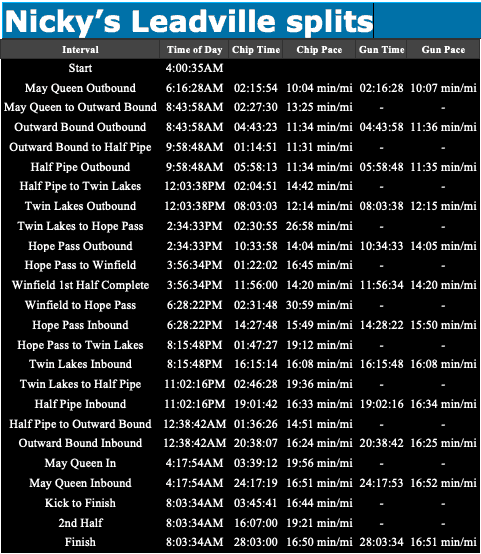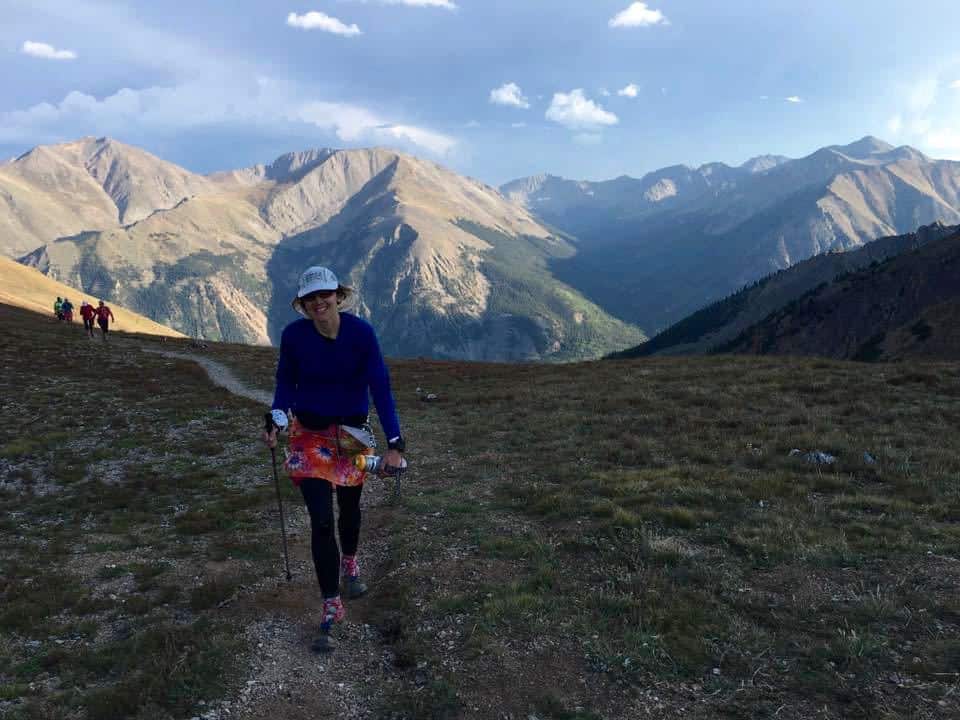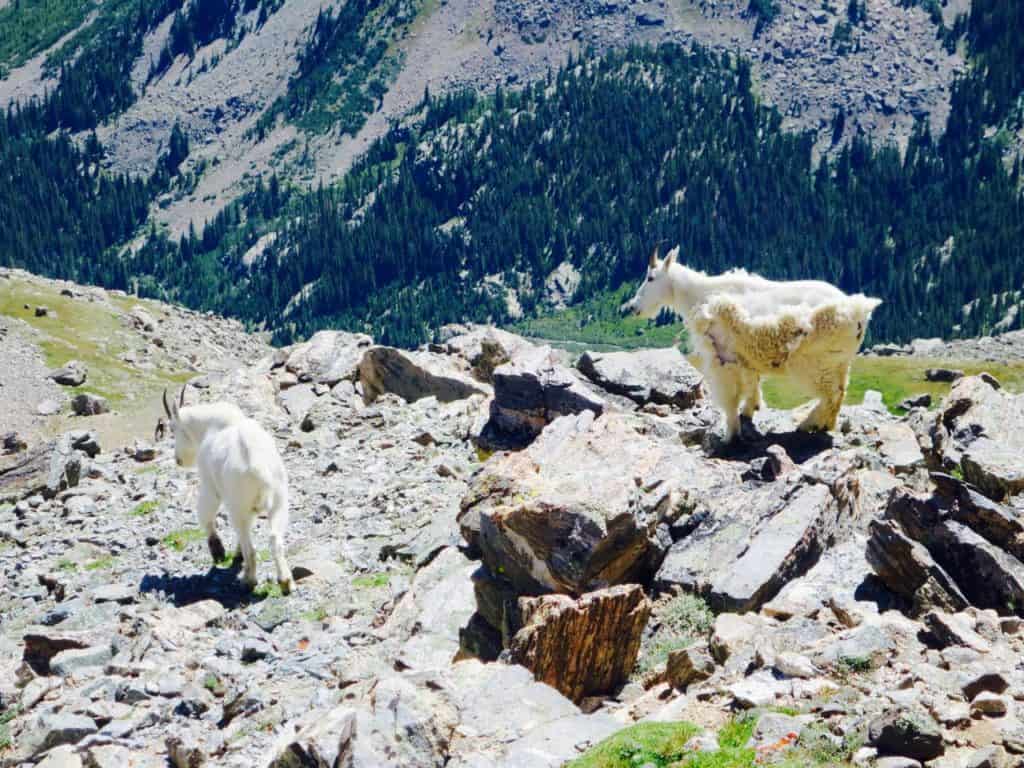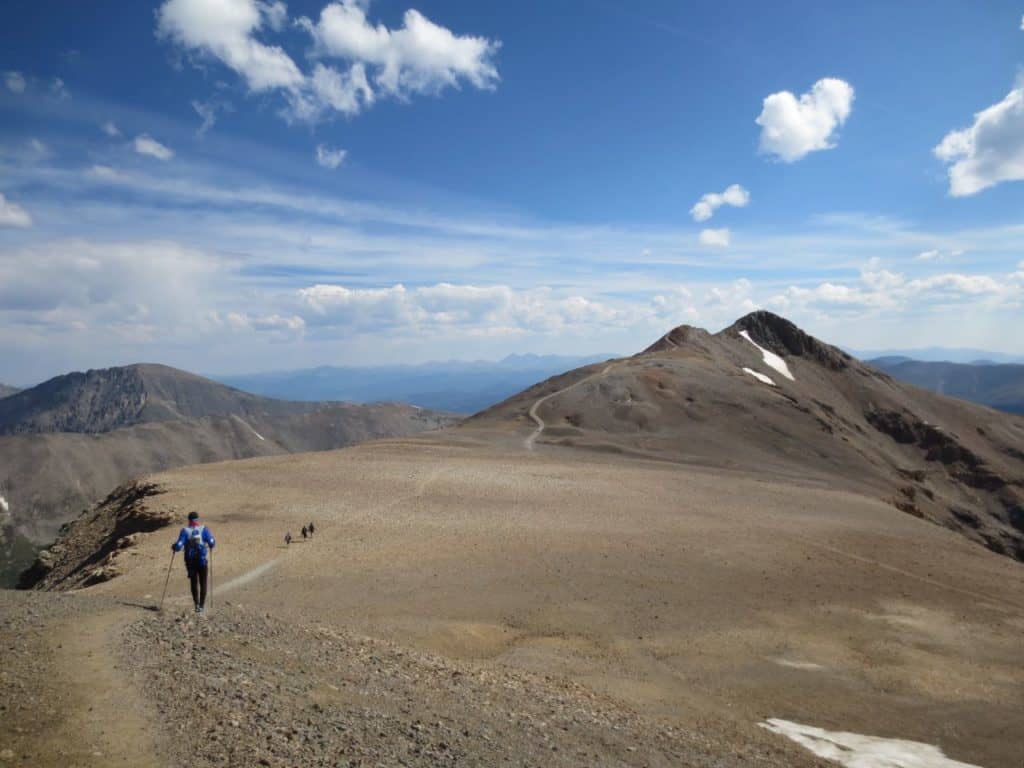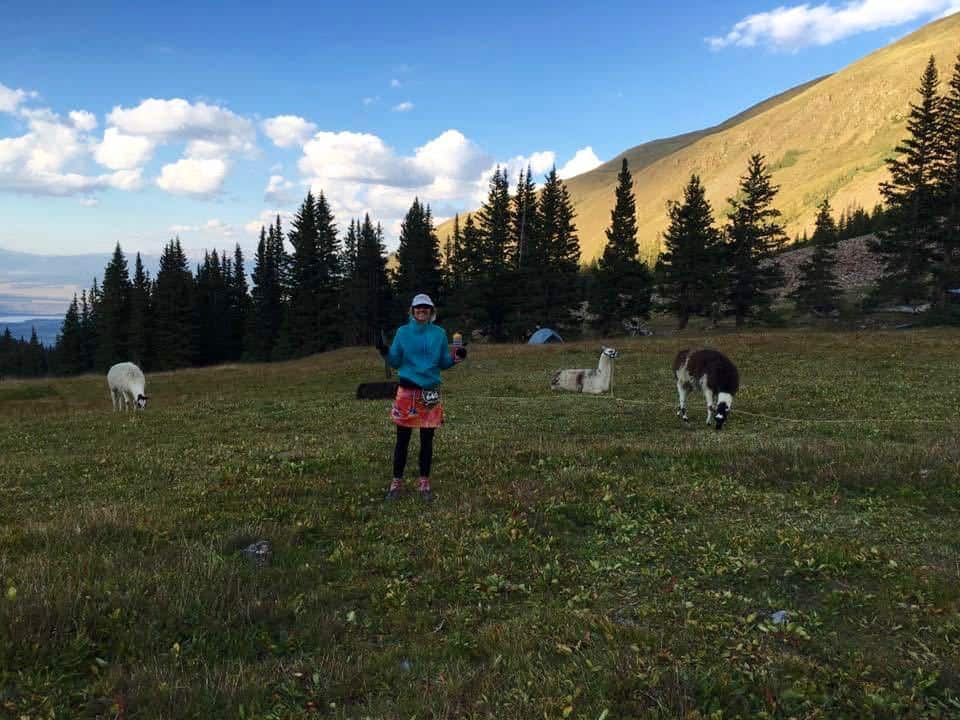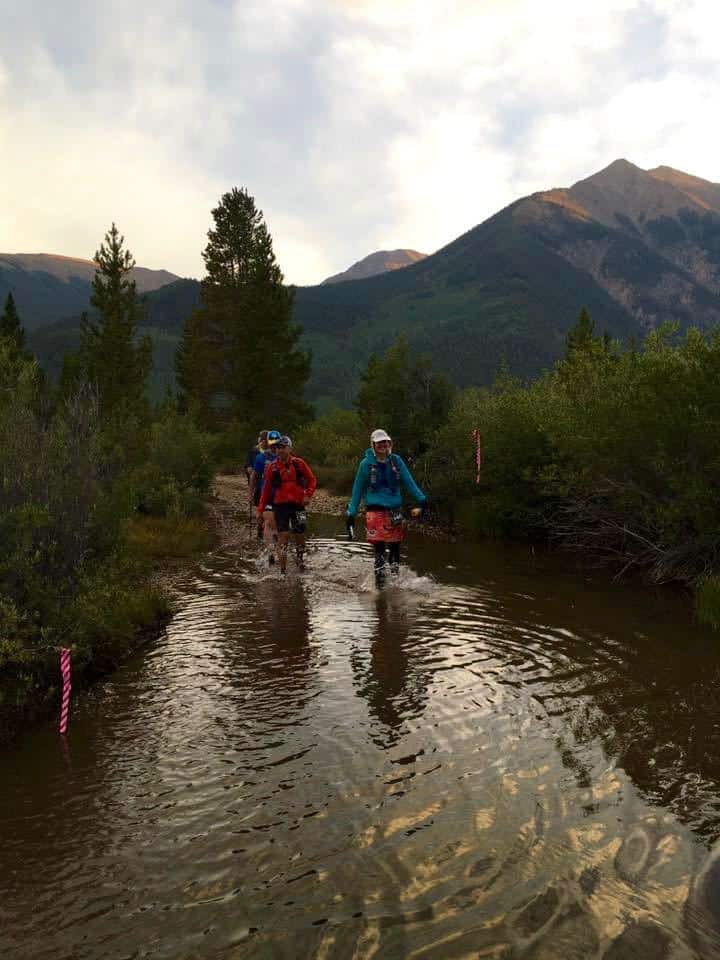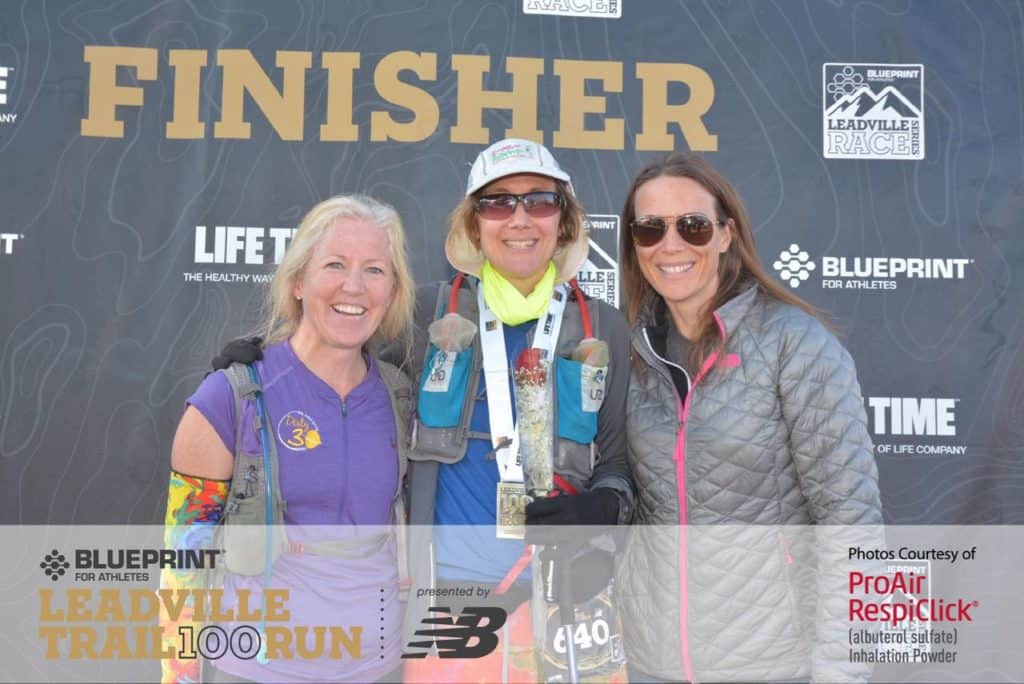I was dead scared of running the Leadville Trail 100, or more precisely, of failing spectacularly. At 30 hours, it’s a tight cut-off for a high-altitude race, which contributes to only about half of participants finishing each year.
As I stepped out of the bus on the town’s wide main road, lined by old-time Saloons, I could hardly breathe. I had flown in from sea level Australia, and Leadville at over 10,000 feet (3,000 meters) altitude knocked the air right out of me as I dragged my suitcase to the Leadville Hostel on 7th Street.
Learn more about the Leadville 100 and how to prepare for it from race director Josh Colley (Interview Aug. ’16):

A usually rather sleepy place with a population of some 2,700 people, Leadville is hub of activity leading up to the 100 Mile MTB and footrace in August each year. Cyclists with limited leave from work are frantically trying to acclimatize in just a few days. Runners are doing speed training, checking their GPS watches and chatting with their coaches online.
Others are in Leadville to do altitude training for other races. You might even run into celebrity athletes like Rob Krar. The popular hangout, City on a Hill Coffee & Espresso, is always packed.
I had done what I could in the months leading up to the Leadville 100 and saw little point in training hard in the last two weeks. The first three days I rested up and drank a lot of fluids, and then started hiking to help my body get used to the altitude.
A great resource for hiking routes in the area is www.14ers.com.
First up was Mosquito Pass, followed by Mt. Massive at 4,400 m and finally, some five days before the race, four connected peaks in one long day – the Mt. Democrat, Bross, Lincoln and Cameron route. Five of us from the hostel started out long before sunrise and only just made the last peak before ominous rumbling and a blackening sky chased us off the mountain as one of the usual afternoon thunderstorms moved in. None of us wanted to get stuck in lightening above tree line.
Quietly I prayed to the weather gods for clear skies on race day. Hunkering down below tree line for an hour or two as a storm passes overhead can cost you your finish at Leadville.
At the hostel, packed with endurance athletes, we discussed splits. I cannot run a race when I think of having to do 100 Miles in one go. But if I break it into many little goals, my mind can handle it.
However, guessing expected completion times for an unfamiliar course is hard. How would I know how long a particular uphill section will take me? While researching online, I hit gold – a website called climbers.net combines past finisher times, averages them out and calculates likely splits depending on the overall target time you enter.
I printed and laminated three versions – the unlikely super awesome splits if I found energy I never knew I had, the likely medium splits I was aiming at, and the risky last ass splits that should get me across the finish line just before cut-off.
Then on the night before the race, I popped two sleeping pills and headed to bed at 6pm. A lack of sleep before a big race can affect the mind in unpredictable ways. Before my first 100 miler, the Bear, I had been so nervous that I only slept one hour the night before. On the second race day after some 30 hours on my feet without sleep or rest, I kept thinking about frog liver pâté and desperately wanted to know whether my pacer had ever ridden on a deer. I had learned from that.
Leadville Hostel owner Cathy Hacking put on a huge breakfast from 2 am and the hostel was bustling with activity as nervous runners frantically searched for misplaced items while their supporters tried to soothe them with calm voices. I for the heck of it couldn’t find my favorite socks. Somebody else thought his shoes had been stolen. All turned up in the end.
At 4 am we were finally toeing the start line in the cold morning air – 100 miles with more than 15,000 feet in total elevation gain were ahead of us. Just about anything could happen in the next 30 hours, and only half of us would make it back here in time. I hoped I would be one of them.
The sky was still dark, a drone was whirring overhead. I knew I needed to go out faster than usual to make the 22k to May Queen in 2h20 in line with my splits and, more importantly, to make the first 100k by quarter past eight that night. The 100k mark is Twin Lakes inbound on this out-and-back course, and I’d been told repeatedly that runners who get to the lakes after nightfall don’t tend to finish.
The next moment, the countdown started and we were off, a sea of bright lights in the dark as crowds of people cheered us on. Then the voices ebbed away, subsiding in the distance, and all that was left was the sound of feet hitting the dirt road leading out of Leadville. This was it, too late to change my mind, the only way was forward now.
Reaching Turquoise Lake, the darkness slowly changed to light as we ran along the water’s edge on single track, over roots and bouncy forest floor. It was magical, this time of the morning, with strips of color stretching over the dawning sky above calm and deep blue waters. Listening to my own breath and the soft, rhythmical drumming of countless feet, I felt like I was part of an ancient tribe, moving in wordless unison, celebrating life in its purest form.
Adrenalin and excitement made running easy and I reached May Queen in good time. I had arrived in Leadville without crew or pacers, but had found supporters among the wonderful people who gather year after year in this mountain town. Retired pharmacist Michael Hester, who spends every summer in Leadville, had agreed to crew me and I had also found three pacers to share the entire inbound half of the course. Big smiles greeted us as we dropped our now useless headlamps to save on weight and filled up on water.
The next goal was Outward Bound, with the big climb up Sugarloaf Pass at 11,000 feet in between. After rooty forest trails, we came up a long, paved road that slowly snaked its way up the mountainside. Rather than running and spending too much energy too early, I power walked at a steady pace.
On the other side was a steep, wide dirt track beneath power lines, hence the name. The section must be hell when muddy and slippery, and I thanked the weather gods for firm ground. But as I jogged into Outward Bound, I realized that this leg had still taken me 15 minutes longer than planned. I had to make up time.
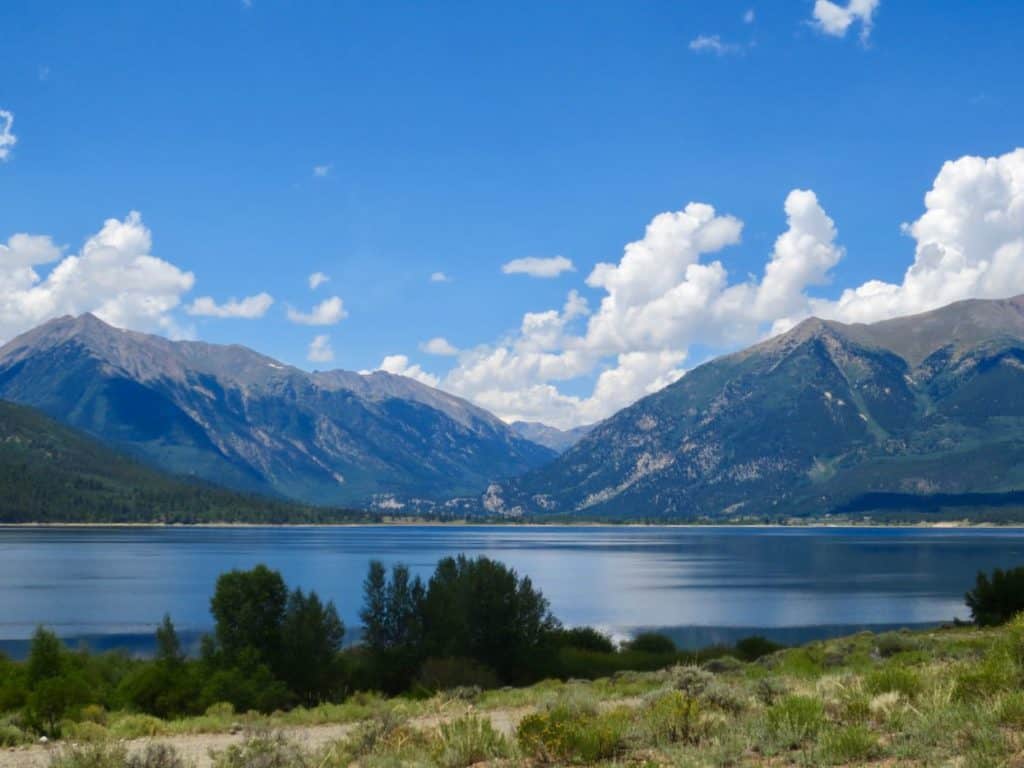
By the time I reached Twin Lakes I was all wrapped up in my own race and only focused on getting in and out as quickly as possible.
With Hope Pass towering ahead of me, I was glad that nothing but blue skies greeted me ahead. I wouldn’t be fried by lightening at the top, or miss my cut-off cowering below treeline.
All I had to do now was climb up to 3,850 m after 40 miles of going hard. My legs were tired and it would only get worse. The trail up Hope Pass is brutal. Leading up through through thick forest, you can never gauge when it will end, and every hope gets dashed by yet another steep section.
But there was no time for rest or catching my breath. I was only just keeping up with my medium splits. Falling behind could endanger my finish. Spending months of training, money on airfares, gear and entry fees, and then running a very long way only to miss a cutoff and being pulled is the last thing I was willing to endure. I ignored the exhaustion and pushed on, pumping all the air into my lungs that I could.
As the trees got sparser and finally made way for a green meadow, I saw what I had been looking forward to for weeks – the famous llamas. These animals are long-term supporters of the Leadville 100 race, together with Vicky Foster and many other wonderful volunteers. Every year they carry water and food for over a thousand runners and pacers up this otherwise inaccessible pass. Leisurely, they now grazed on the lush grass, eyeing each struggling runner with renewed interest.
I didn’t have much time to enjoy the sight. I was more than 10 minutes behind my splits and had to work on my downhill running skills heading toward Winfield, the 50 mile turnaround point. Fortunately I love downhill sections. Sliding on rubble and jumping over rocks on the steep trail leading down into the valley, I made up a decent bit of time. I even came running into Windfield aid station slightly ahead of my target, completing the first 50 miles in just under 12 hours.
Jen Kraxner, the best pacer you could ever wish for, was waiting at Winfield, shouldering my pack as well as her own to make the return climb easier for me. Leadville is one of the few races that allows muling i.e. for pacers to carry their runner’s running vests.
I had met Jen and her husband Joe at the hostel. Both are past finishers of the Leadman/Leadwoman challenge. This superhuman feat involves the completion of all races in the Leadville series in one summer: the marathon, the 50 mile Silver Rush running or MTB race, then the 100 Mile MTB race, followed by a 10k run right the next day and finally the 100 Mile footrace less than a week later.
Jen and Joe had done the MTB 100 miler on a tandem mountain bike and finished the 100 Mile trail run hand in hand. They have been coming to Leadville summer after summer for many years, racing, supporting and soaking up the mountain air. There are no better two people out there to help you with your first Leadville 100.
Joe had even lent me a small portable charger to make the battery of my Garmin watch last for the entire distance. The little charger was tucked into my running vest, and a cable fed through the sleeve of my shirt to connect it to my watch with a clip. Now Jen was to help me over the hardest climb in this race.
I had been pumped arriving at Winfield, but those 50 miles in my legs started to show as soon as we began climbing again. The second time going up Hope Pass was far more agonizing that the first climb.
Jen made me march up that mountain, waving food at me on a regular basis, and told me how great I was doing even though I felt like I was going to collapse toward the top. Her ceaseless encouragement and the camaraderie among all the runners, whether they were still on the downhill toward Windfield or coming up again like me, gave me the energy I needed.
No face flew past without a “good job”, “great work”, or “well done” being exchanged. There were smiles everywhere. And then there were the views. Seeing those majestic mountains stretch out to the horizon puts pain into perspective. I couldn’t help but feel awed and utterly fortunate to be part of it all. I was doing Leadville!
As we reached Hopeless aid station the second time, more than 15 minutes behind schedule, Jen ran ahead to get me soup while I sat down to eat and look at llamas. After some food in my stomach and faced with another long downhill to make up time I started running again. It hurt, but I needed to get to Twin Lakes before nightfall. I was wedded to the idea that if I could just get there by 20:15, I would finish.
Once we had waded through Lake Creek, Jen ran ahead again to get my drop bag ready. Everything was laid out as I came into the aid station right on time. A big group from the hostel was there, cheering and helping out. I was so glad to see them all. With that much help, changing out of my wet shoes and putting on warmer night gear took no time at all.
My new pacer Juliette Schmidt was ready to go, so off we went back into the forest, for the long hours through the night. Reflective trail markets flashed ahead, and the rustling of small animals making their way through the undergrowth accompanied us. The air was fresh now and a little damp, as the shine of our headlamps led us through the woods.
Juliette was planning to run the Leadville 100 next year and wanted to get experience on the course. She had been volunteering for the race when another hostel guest matched us up.
Having someone to share the journey with cheered me up a great deal, but I had been on my feet for some 17 hours now and physical exhaustion was threatening to settle in. Even my stomach was tired and eating wasn’t easy. I sucked on hard candy and TUMS when my body no longer wanted the calories I needed. We walked some, and ran some, and walked some and ran some.
Energy levels rose and fell, but overall we were moving well. At Half Pipe I was 10 minutes ahead of schedule, and by the time we reached Outward Bound, I was half an hour faster than my medium splits. Even so late in the night, a big group from the hostel was waiting for us, cheering, updating how the other hostel runners were doing, and sharing hugs and smiles.
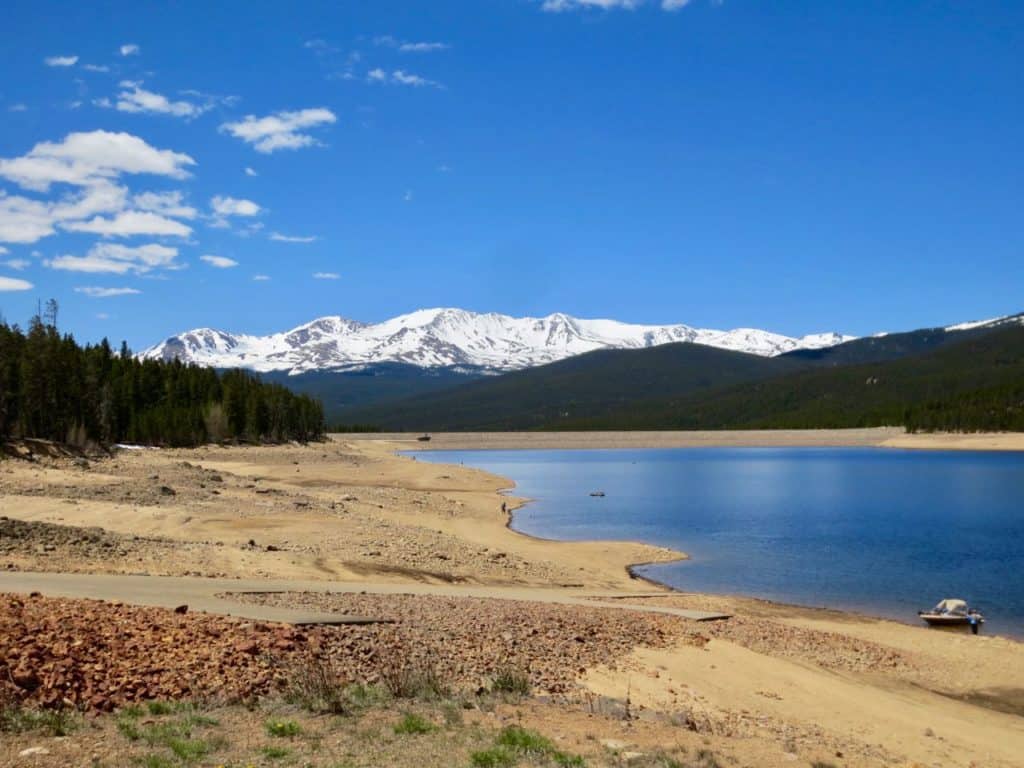
Now came the climb up Powerline and I remembered another runner’s advice: It’s much longer than you think – beware the false summits. So I kept my head down, didn’t look for any summits in the dark and just marched on until music and flashy lights greeted us at the unofficial aid station at the top.
I had been told this aid station offered hard liquor and a naked guy. Wondering how the naked guy would survive the freezing cold at night and admiring is dedication, I had been looking forward to meeting him. No naked guy could be found, though, so I only filled up water and marched on, leaving Juliette to investigate the situation more closely and catch up with me later.
I started running again on the downhill, and by the time we arrived in May Queen at quarter past four in the morning, I was still more than half an hour ahead of my splits.
There was a problem though. My next pacer, Megan Finnesy, couldn’t be found. Jen Kraxner had recruited Megan for me, badgering her until she agreed to pace me from May Queen to the finish. But now she wasn’t there and I didn’t want to lose precious time waiting.
Juliette had to go, so I set out on my own. Had I been sick or disorientated this would have been bad, but I felt alert. I was awake and had been warm all night under my various layers of merino wool. I was good to go.
As I left the aid station I even felt a sudden boost of energy and started running on the flat toward the lake, overtaking Chris Calimano and his pacer.
Chris is a very nice and very accomplished athlete who completed the 4 Deserts series in one year. The series involves running 250k each in the Sahara in Namibia, Gobi in China, Atacama in Chile and in Antarctica. Overtaking him made me feel pretty good and I had no desire to relinquish this hard-won lead over someone who is a much better athlete than me.
Of course, unlike me, Chris was actually doing Leadman and had completed the 100 Mile bike race just a week earlier. But I was ready to take every confidence boost I could get and “chased” further ahead into the forest along the lake.
I was going fast!
Then a young man came lightly jogging up behind me, easily catching up. What bastard runner was this, looking so fresh at close to Mile 90??
He turned out to be a volunteer kindly offering to pace me after learning that Megan hadn’t shown. May Queen aid station staff had been alerted that I didn’t have a pacer and sent someone after me to help.
Together we continued when, suddenly, we heard rustling ahead and saw someone running towards us through the woods. It was Megan! After realizing she had missed me at May Queen, Megan had driven around the lake to catch me from the other side.
Now I had two pacers, which can get you disqualified, so one had to go.
Too tired for decisions I let them sort it out amongst each other, and ultimately headed on with Megan. As the sky turned from dark to light for the second time during my Leadville 100, I could hardly believe the experiences that lay behind. All this time felt more like a dream that may have spanned weeks rather than just a bit more than a day.
Around me I recognized the same path I had run so easily the day before. Now the going was slow and my legs were stiff and wobbly, but every step also brought excitement. This was the final stretch, the final leg before the finish. I was going to finish Leadville!
Already years ago, I had read about this race in Born to Run, marveled at Ann Trason’s course record, the mind-blowing achievements of the Tarahumaras, and soaked up the stories and legends spun around the Race Across the Sky.
After winning the lottery, I had spent endless hours pushing myself, training in difficult terrain, doing sprint sessions on hills, still always fretting that it wouldn’t be enough. And here I was, just a few last miles from the finish, feeling indescribably happy.
Leadville. I couldn’t believe I had nearly made it.
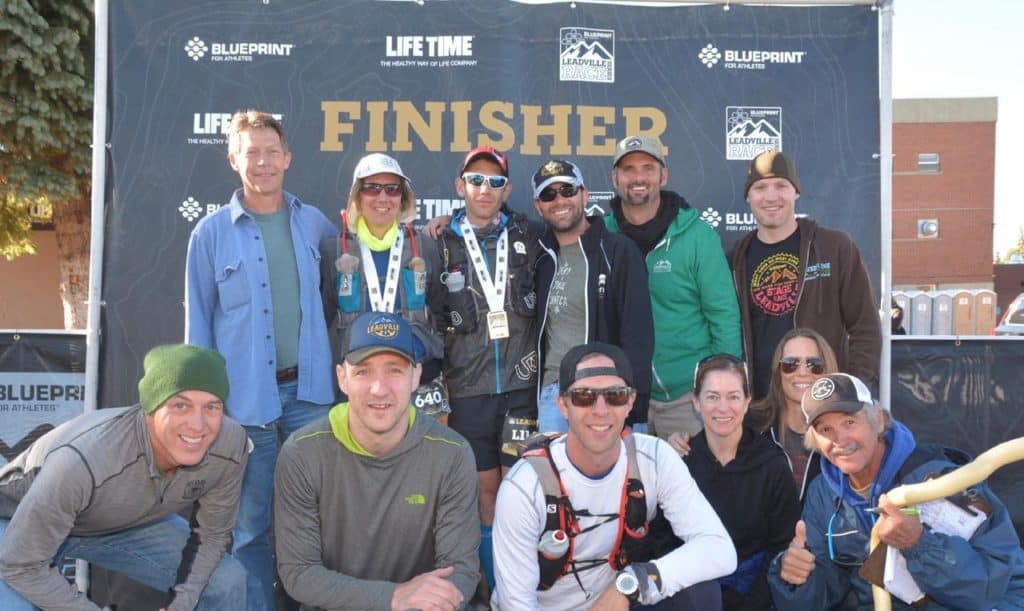
One more hill, a few more steps, and ahead was the Leadville 100 finish line. As we drew close at eight o’clock in the morning, I ran the last meters uphill and made it in 28:03 as the 165th finisher out of some 650 starters. As usual for this high altitude event, only about half of us finished that year.
There were hugs from my wonderful pacers and new friends from the hostel, and a finisher medal, necklace and red rose from race founders Ken Chlouber and Merilee Maupin.
For a while I sat and cheered on the other finishers, including Chris, who wasn’t far behind and successfully completed his Leadman challenge. I drank some hot chocolate, but was unable to eat. Walking was also out of the question, so some lovely hostel buddies picked me up by car and brought me back.
I couldn’t eat all day. Sitting with Chris at the finisher’s ceremony, we were laughing at our nauseousness, hoping we wouldn’t suddenly puke when receiving our treasured belt buckles. Luckily, both of us managed to hang on to our stomach contents, and by evening food started to look good again.
After dinner we all rested up on the giant couch in front of the TV, eating ice cream out of the tub, and dozed off happily spoon in hand.
Finishing my Leadville 100 race, video by Joe Kraxner:
Leadville 100 quick facts (latest information on the race website):
Course records:
Matt Carpenter 15:42:59 (2005)
Ann Trason 18:06:24 (1994)
Course type: Out and back
Cut-off: 30 hours
Elevation gain: 15,600 feet (4,800 meters)
Highest point: 12,600 feet (3,850 m)
Surface: Mostly forest trails, dirt roads and short stretches of asphalt
